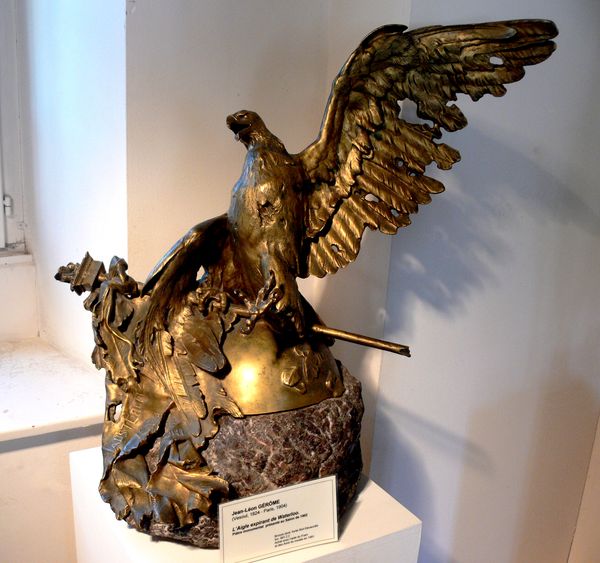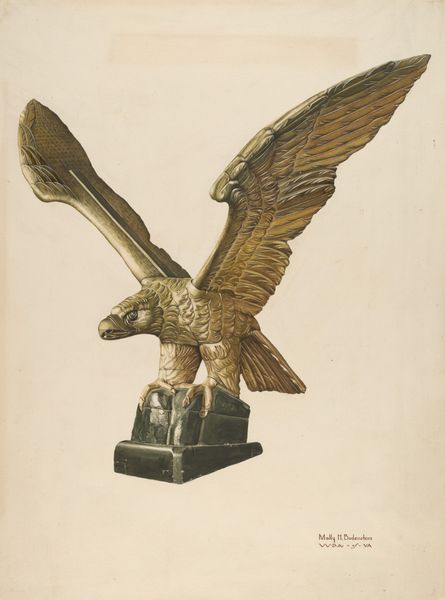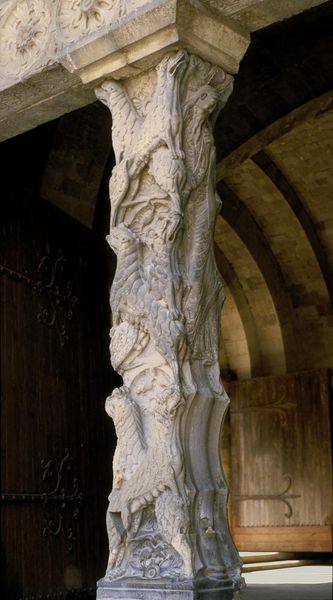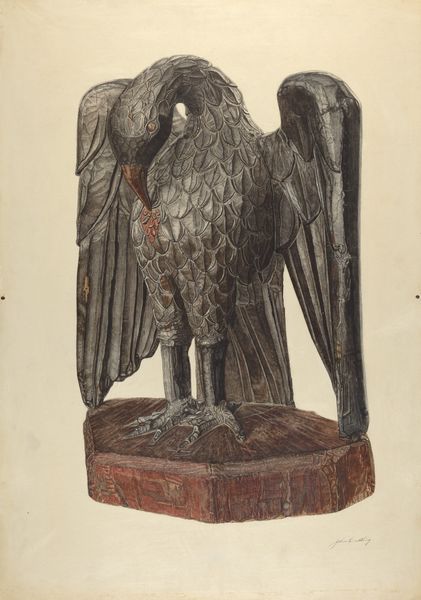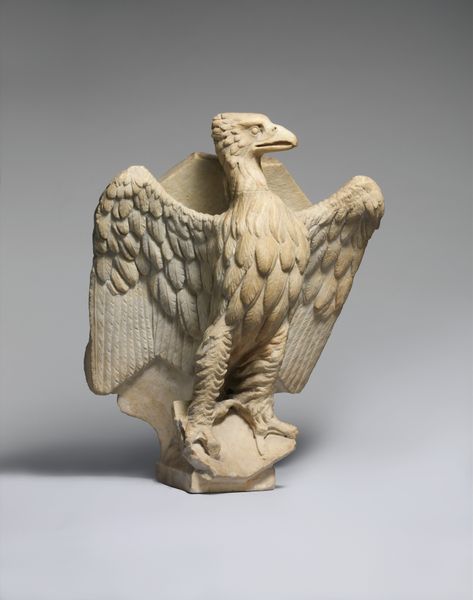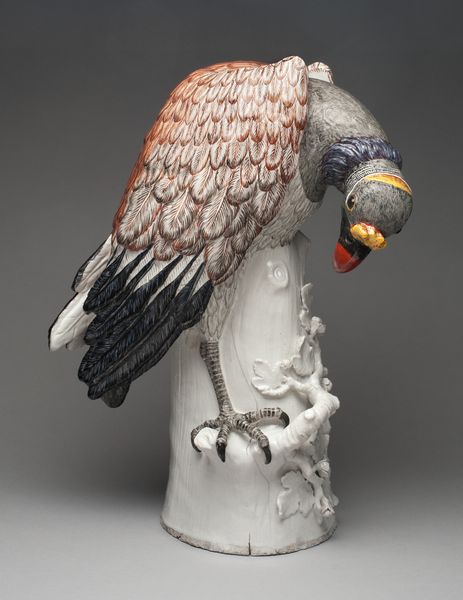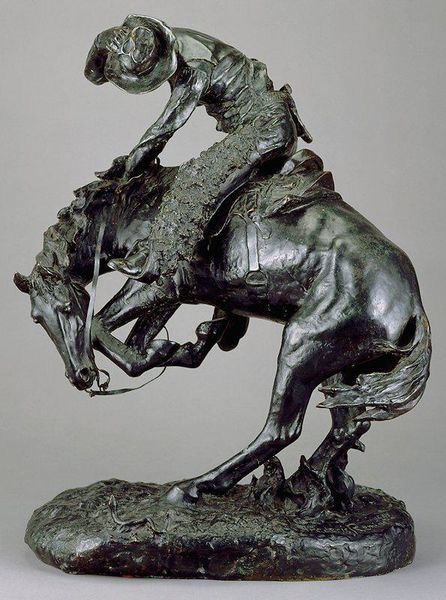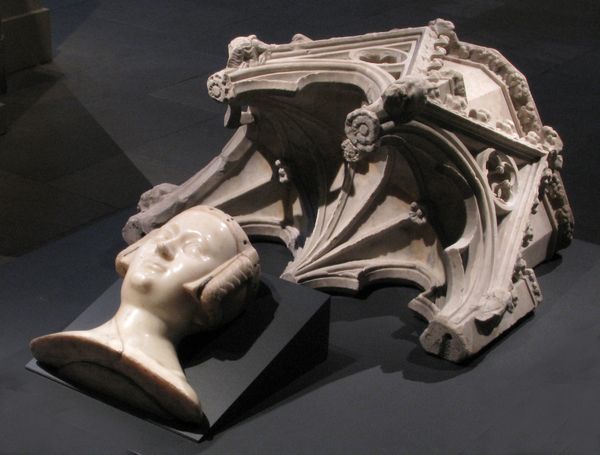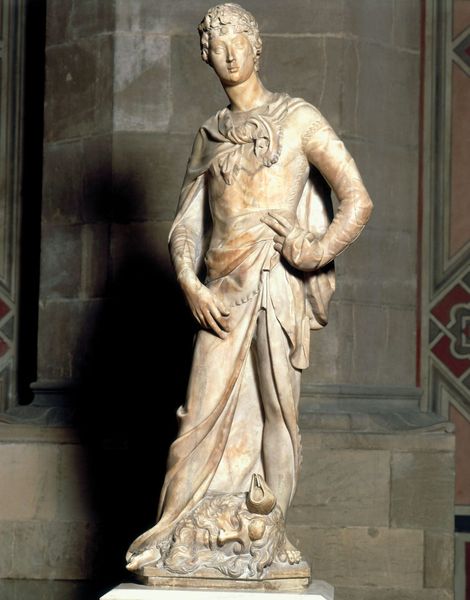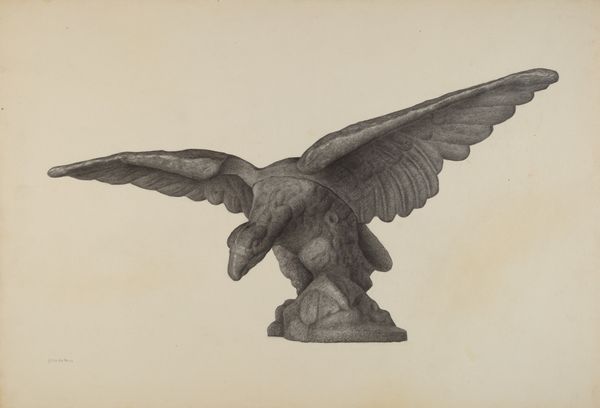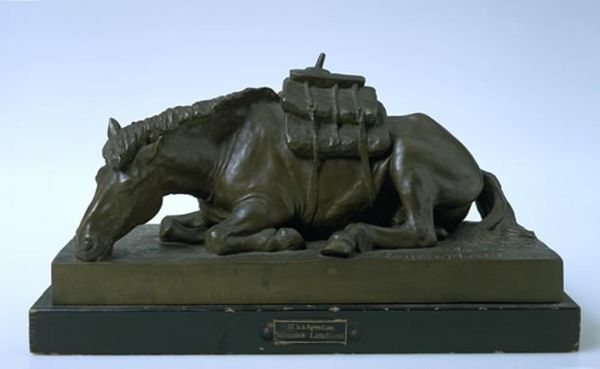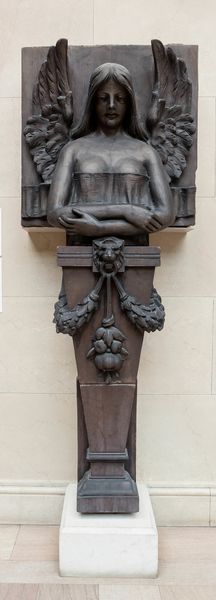
bronze, sculpture
#
portrait
#
statue
#
animal
#
structure
#
stone
#
sculpture
#
bird
#
bronze
#
figuration
#
11_renaissance
#
sculpture
#
statue
Copyright: Public domain
Giambologna, a Flemish sculptor active in Italy, likely made this bronze eagle in Florence during the late 16th century. The eagle, or "aquila" in Italian, was a symbol of power, often associated with Roman emperors and later adopted by European nobility. During Giambologna's time, Florence was under the rule of the Medici family, who used art and symbols to legitimize their power. The eagle, with its connotations of strength and authority, would have been a fitting emblem for the Medici. This sculpture likely served as a decorative element in one of their palaces, reinforcing their image as powerful rulers. To understand this artwork better, we can delve into the history of heraldry and the use of animal symbols in political imagery. By exploring the social and political context in which it was made, we can gain a deeper appreciation of how art served as a tool for power and propaganda.
Comments
No comments
Be the first to comment and join the conversation on the ultimate creative platform.
